However, traditional automakers are having a rough time with the transition to manufacturing and selling EVs. While there are lots of reasons for this including pricing/costs, the economy, government policy, politics, and more, the reason that is most the “fault” of the manufacturers, the reason they have the most control over, ironically, is their apparent lack of understanding when it comes to the user experience of electric vehicles. Non-traditional or startup automakers like Tesla and Rivian seem to have a much better grasp of user experience for their electric vehicles, in contrast. What do I mean by user experience exactly? In the simplest terms, I mean how easy or satisfying it is to use the product (i.e. EVs) these companies manufacture.
How can it be true that some of the largest and most long lived corporations in the world are failing to understand what their customers find easy to use? The answer is that electric vehicles have fundamental differences, from a user experience perspective, compared to gasoline powered vehicles. Traditional manufacturers tend to come at EV product design from the perspective of their historical product design and expectation sets with gas powered vehicles, and this is leading them toward failure. That is a blanket statement, and it isn’t quite fair because some automakers are obviously investing in EV product design that centers more around the user experience of this new technology, brands like Kia, Hyundai, Porsche, and others come to mind. All three of these companies, for example, have invested in 800V charging capabilities, enabling the fastest possible charging times for most of their EVs. One of the big hurdles for many customers switching to EVs is in addressing their expectations around how long it takes to “refuel”. Although the timing of that critical aspect of EV ownership depends on several other factors besides the voltage rate it can charge at, enabling its customers to potentially charge in as little time as possible shows these companies are putting their customer’s experience at the forefront of their design.
How and where can we see examples of this failure on the part of traditional automakers? First and foremost perhaps, has been the lack of major investment in charging infrastructure (until recently) by companies like GM and Ford. But we can also point to both of those companies electing to equip their EVs with some of the lowest/slowest charging rates of any brands, with Chevy’s highest volume EV, the Bolt, having the lowest/slowest charging rate of any EV on the market (at 55 kW maximum) and Ford only enabling 110 - 150 kW charging for their popular Mach-E and F-150 Lightning EVs (rates we might say are just minimally acceptable). Kia, Hyundai, Porsche, Tesla, Rivian, Lucid vehicles all can charge at significantly higher rates, which translates to less time waiting for range on long trips. Tesla, for example, also knew that as soon as they began to sell tens of thousands of vehicles per year, they would need to simultaneously enable their customers to use their vehicles in ways they expect to use them. This meant Tesla decided to invest in a system necessary to enable its customers to drive the longer distances they expect to be able to go without having to wait unreasonable lengths of time to continue their journeys. Traditional automakers simply ignored this requirement and either focused on plug-in hybrids (or PHEVs, which we do need as part of our transition toward a mostly electric powered future) or by creating EVs that wouldn’t be ideal for very long trips in the first place. In other words, they didn’t prioritize their customer’s experience and left it up to owners to either put up with the downsides of their hamstrung designs, or rely on gas powered engines for the longer distance trips. This behavior, if it continues, will spell the end of traditional brands as we know them because they’ll continue failing to produce products that customers actually want to buy, or the automakers that do get it will take more and more of the market share away. It is only a matter of time before manufacturers that “get it” start selling EVs that meet nearly every possible consumer use case and the charging infrastructure is adequate for everyone as well. Government policy will have a big impact on how quickly this happens, but given that it is generally bad for the economy when many of the largest and most profitable corporations go bankrupt, it may take many years for these changes to play out. That is certainly a timeframe in which such corporations could figure it out, and for everyone’s sake let's hope they do.
These successes and failures to address customer experience are not the only examples of how some companies are getting it right and others are dropping the ball, and those that are doing it better still have plenty of room to improve. For example, Tesla could make their in-car range estimates more accurate, transparent and educate their owners in the process. GM could focus on giving their EVs acceptable charging rates before trying, and failing miserably, to build their own software for functions like infotainment that are otherwise available “off the shelf”. Both Ford and GM could have more effectively positioned PHEVs in their larger SUVs and pick-ups first, while charging infrastructure gets built out (with or without their support), and brought out larger EVs a little later. But what do you think, reader? What should your EV driving experience be like? If it cost less, saved you time (never having to go to a gas station), and was otherwise superior in many ways to driving a gasmobile, would you switch?
Please leave your questions and comments below.
Images courtesy of Tesla, Ford, GM, and Kia.
Justin Hart has owned and driven electric vehicles for over 15 years, including a first generation Nissan LEAF, second generation Chevy Volt, Tesla Model 3, an electric bicycle and most recently a Kia Sorento PHEV. He is also an avid SUP rider, poet, photographer and wine lover. He enjoys taking long EV and PHEV road trips to beautiful and serene places with the people he loves. Follow Justin on Torque News Kia or X for regular electric and hybrid news coverage.








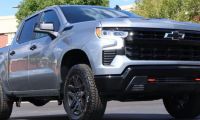
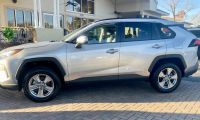
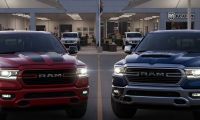
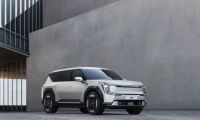
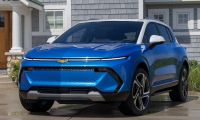
Comments
We are at least 25 to 30…
Permalink
We are at least 25 to 30 years away from the technology necessary to have functioning EV.
80%+ of the batteries are made in Chins which only benefits their economy and the EV catastrophe is a byproduct of a senial old man in Washingtpn? DC
But I’ll point out that we…
Permalink
In reply to We are at least 25 to 30… by Robert (not verified)
But I’ll point out that we do already have millions of functioning EVs on the roads in the US already. While much of current EV batteries are made in CHina or from materials refined/produced in China, the benefits are certainly not ONLY to their economy. It takes American sales people to sell those EVs, service people to service those EVs, Americans are writing the software for those EVs (in many cases, though not all), Americans are installing the charging equipment for those EVs and American companies are producing that charging equipment, all while employing Americans and contributing to our economy. You may be taking an entirely one sided and narrowly thought out view of this. I’ll end by saying that EVs have been around as long as gas powered cars have and in fact, until about 1920, were actually more common than gas powered cars. Modern EVs are what they are not because of any senile old men in Washington DC, I can assure you.